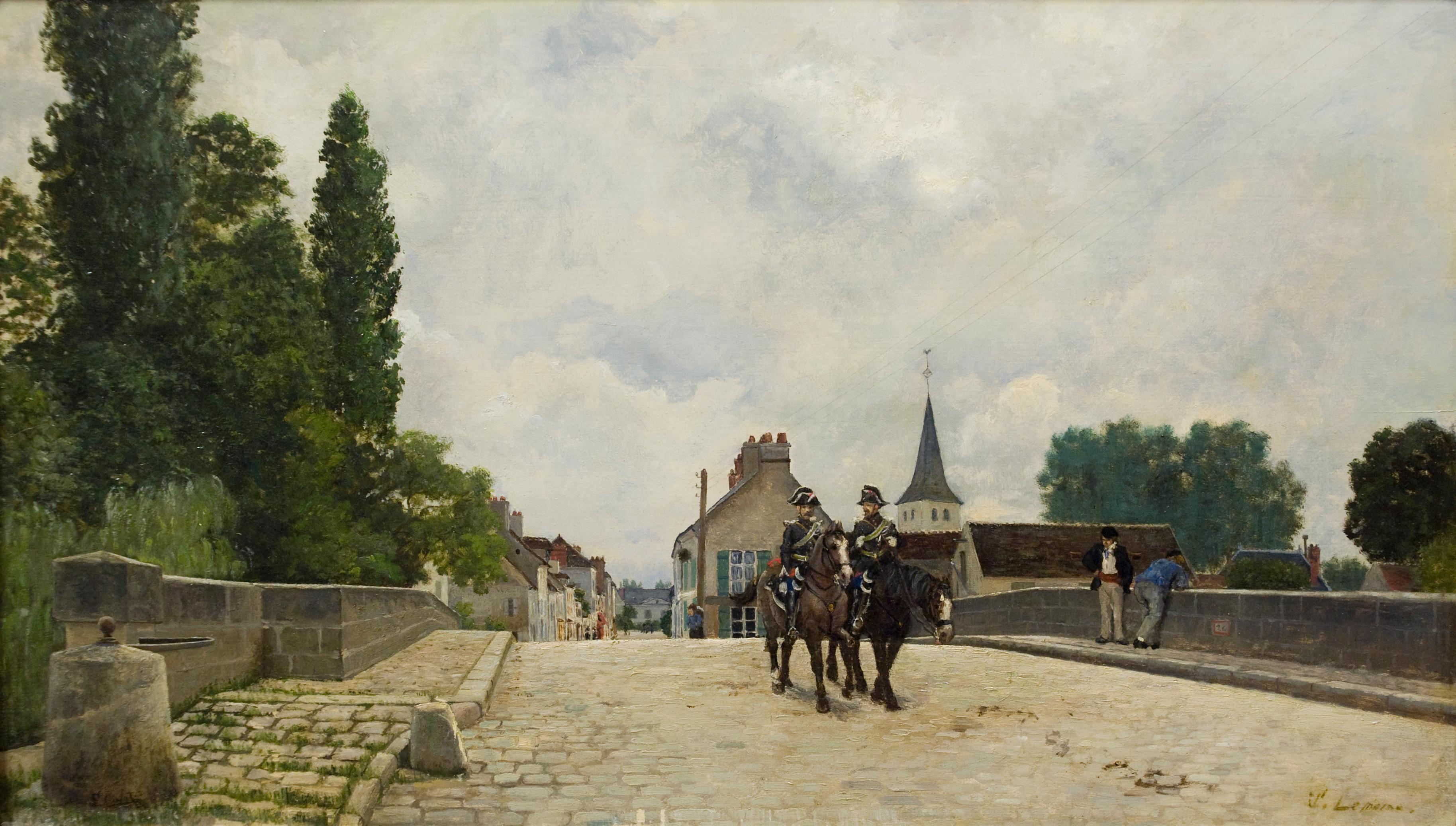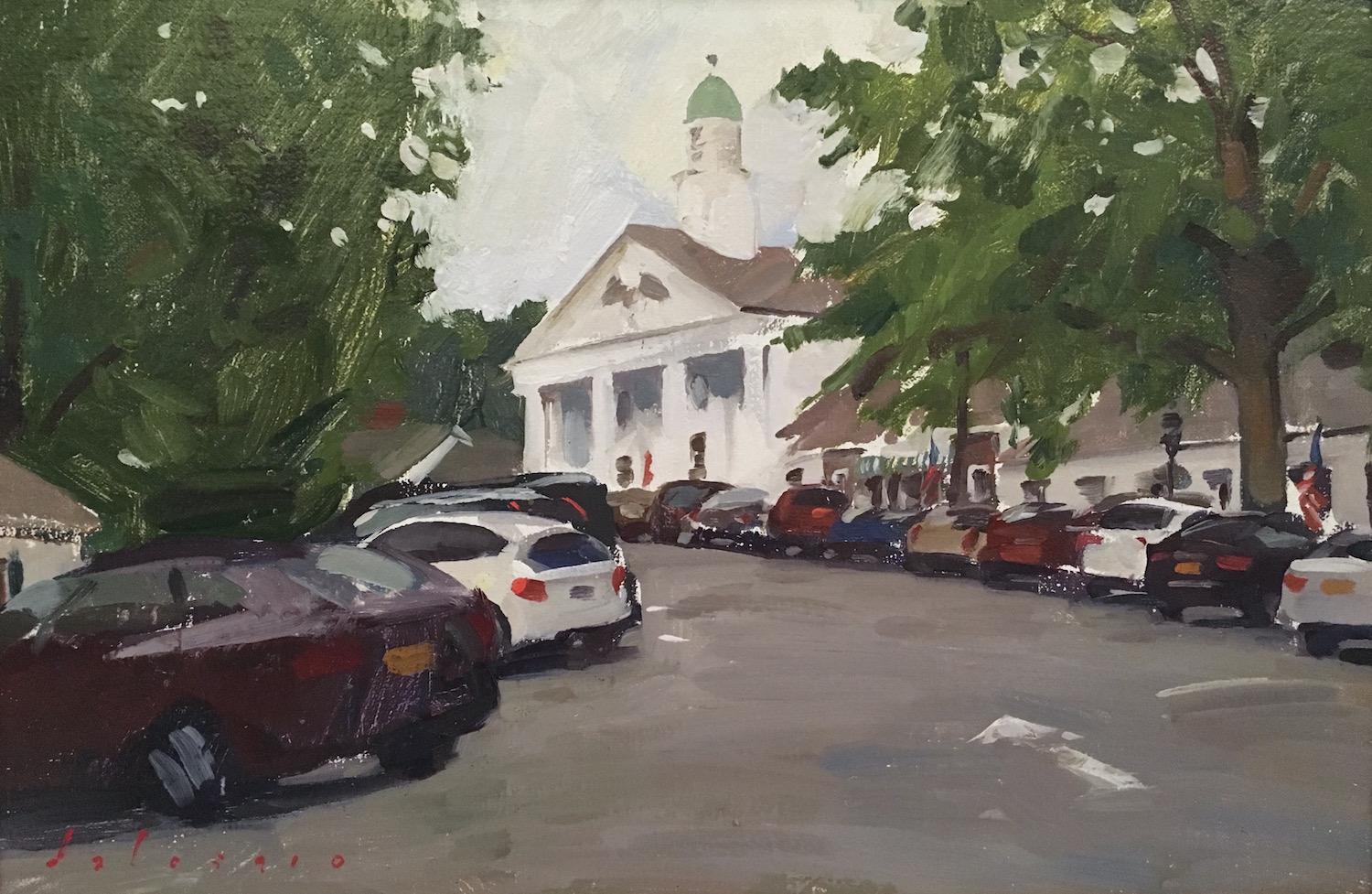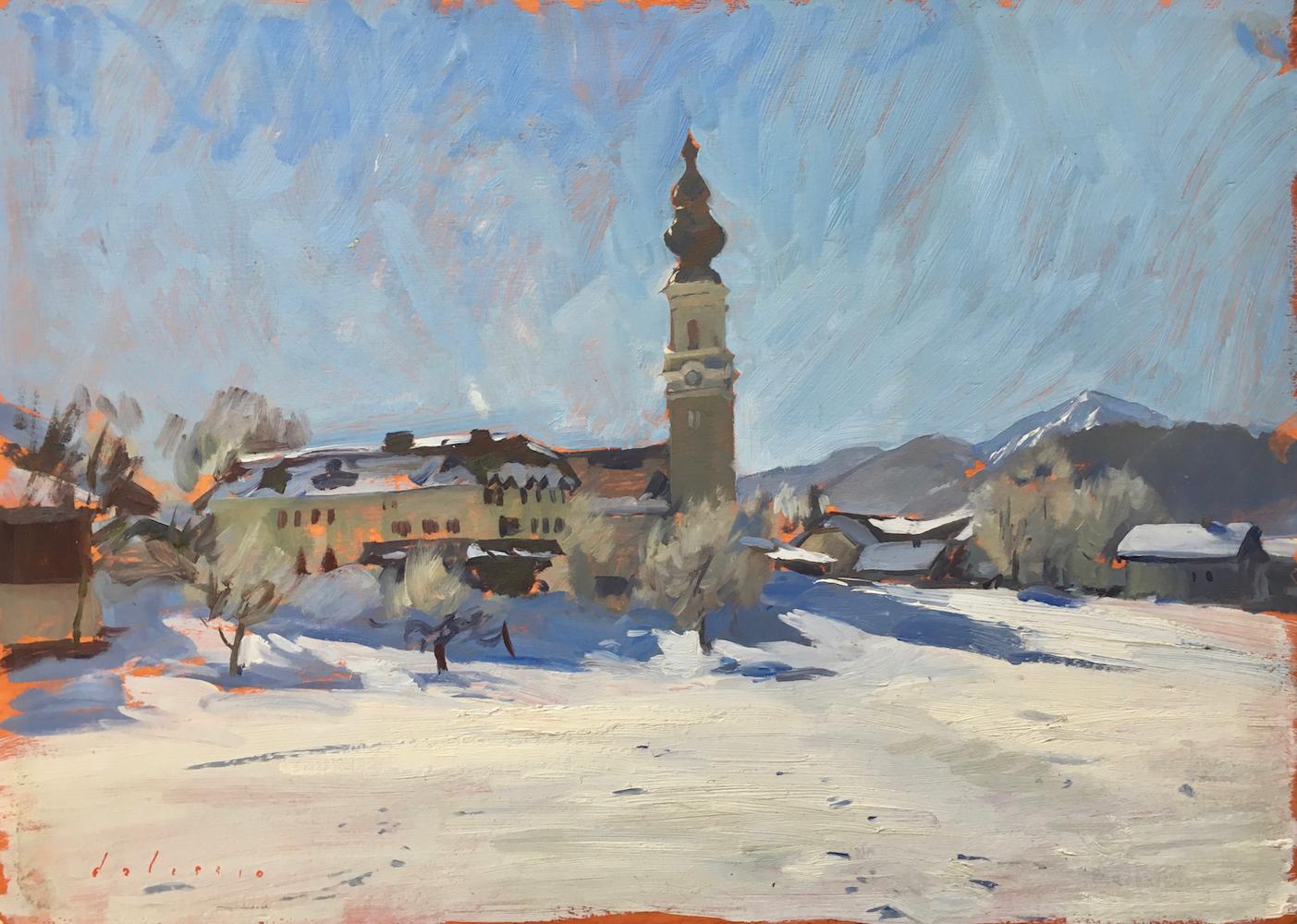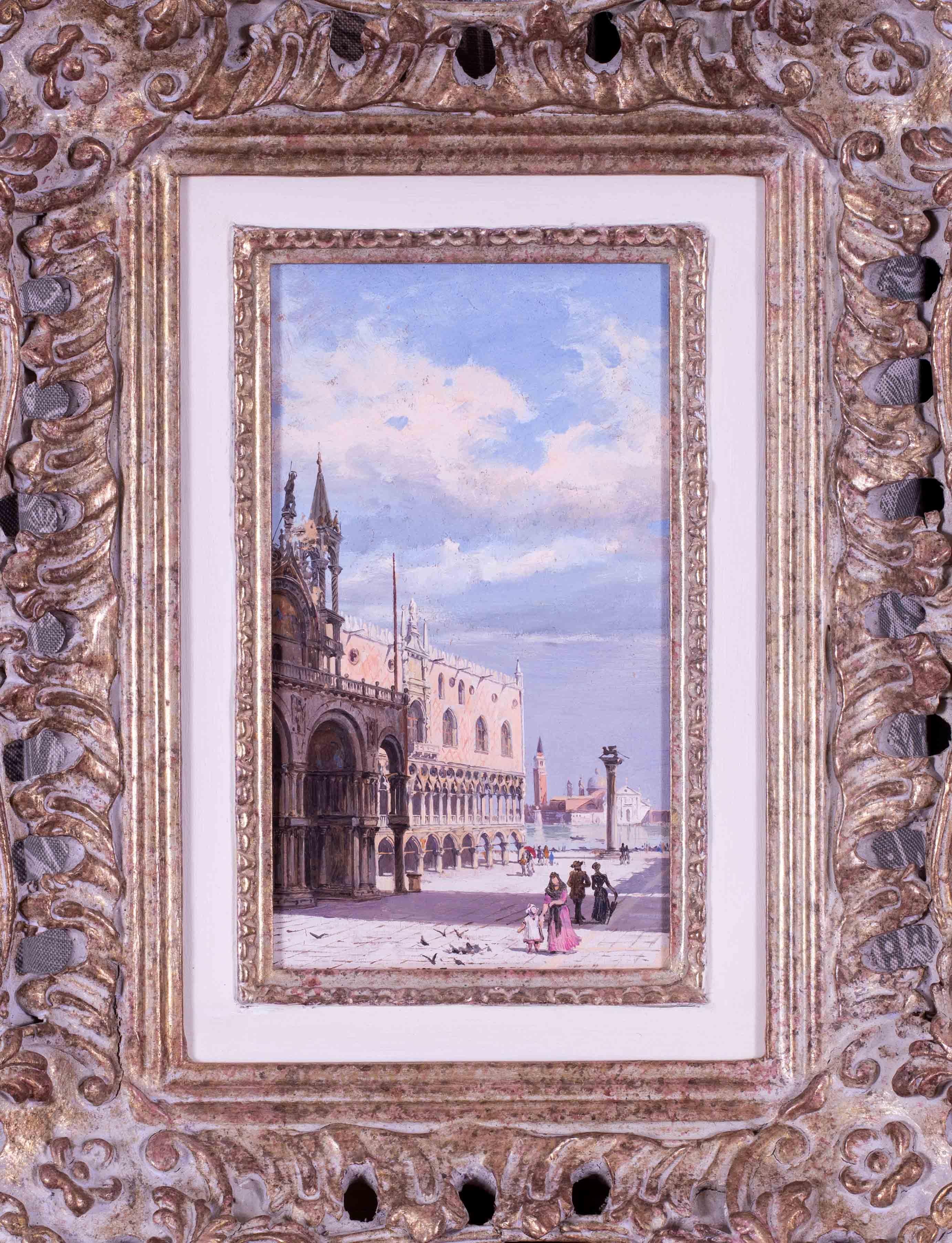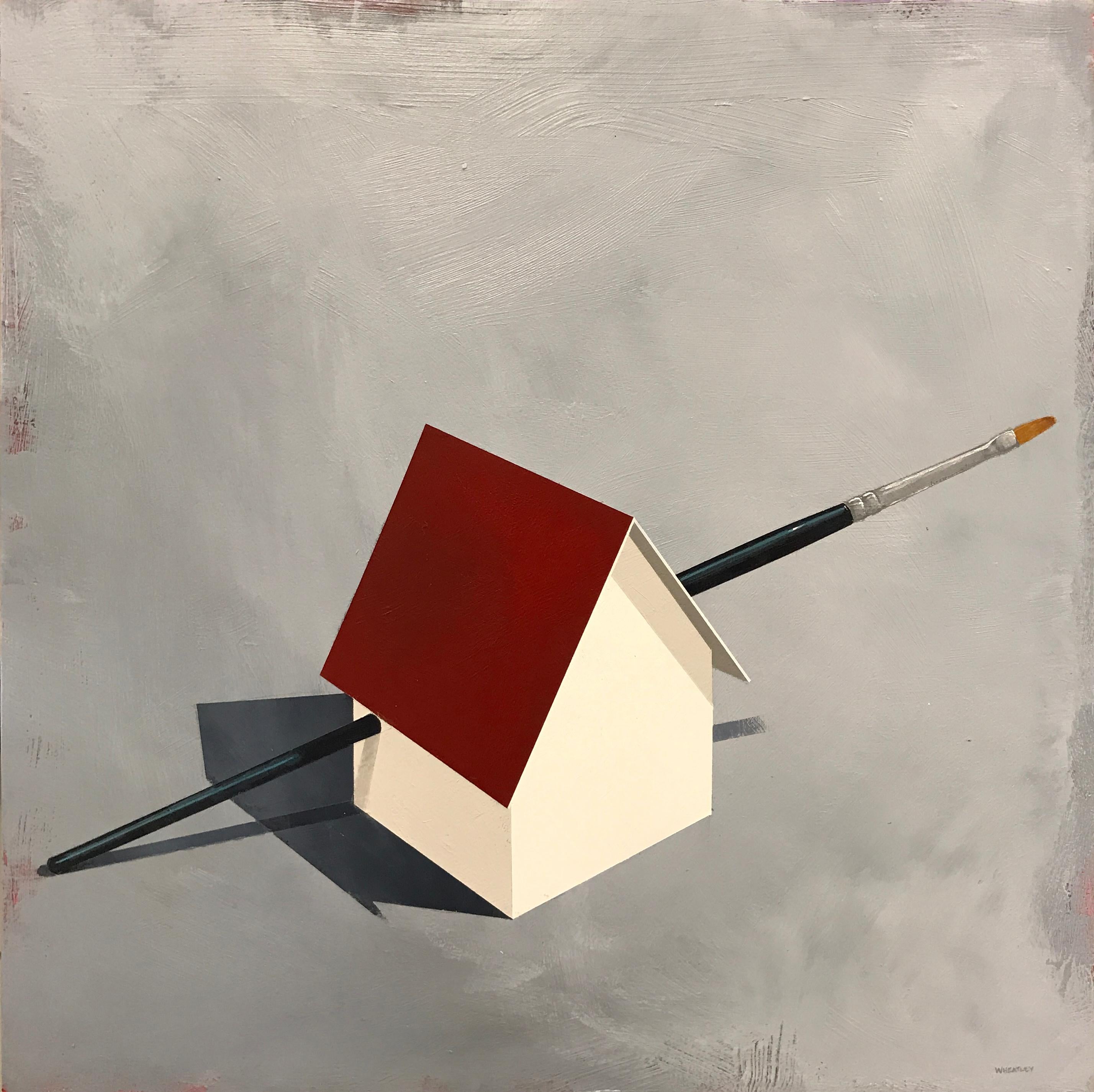Items Similar to Waterfall landscape signed Eugène Deterre, Bruges circa 1830
Want more images or videos?
Request additional images or videos from the seller
1 of 10
Eugene DeterreWaterfall landscape signed Eugène Deterre, Bruges circa 18301830
1830
About the Item
Painting, oil on panel depicting an animated landscape with river and waterfall.
Signed Deterre Eugene (1810-1842) and located Brugges.
Flemish School, circa 1830 Belgian.
WithIn its original giltwood frame.
Excellent condition. Original board and original frame
Dimensions without frame Height: 39cm /15.5 inches Width: 51 cm / 20 inches
Dimensions with frame Height: 53 cm / 21 inches Width: 64 cm / 25 1/4 inches Depth: 6.5cm / 2.5 inches
- Creator:Eugene Deterre (1810 - 1842)
- Creation Year:1830
- Dimensions:Height: 14.97 in (38 cm)Width: 19.3 in (49 cm)
- Medium:
- Movement & Style:
- Period:
- Condition:
- Gallery Location:Paris, FR
- Reference Number:
About the Seller
5.0
Vetted Seller
These experienced sellers undergo a comprehensive evaluation by our team of in-house experts.
1stDibs seller since 2019
8 sales on 1stDibs
- ShippingRetrieving quote...Ships From: Paris, France
- Return PolicyA return for this item may be initiated within 14 days of delivery.
More From This SellerView All
- Fishermen By The Lake, Oil On Canvas, Signed Dommersen, Dutch School, 1870By Pieter Cornelis DommersenLocated in Paris, FROil on canvas depicting a scene of Fishermen by a lake, Dutch landscape. Signed on the lower left corner of Pieter Cornelis Dommersen. Painter of Dutch seas and landscapes, in Lond...Category
Late 19th Century Academic Landscape Paintings
MaterialsOil
- View Of A City, Animated Landscape by Jean Victor BertinLocated in Paris, FR"View of a city, animated landscape" attributed to Jean Victor Bertin. Oil on panel VB monogrammed, Circa 1830 Within its original giltwood frame from the same period. Dimensions without frame Height: 56 cm / 22 inches Width: 90 cm / 35.4 inches Dimensions with frame Height: 76cm / 30.7 inches Width: 108 cm / 42.5 inches Depth: 8 cm / 3.14 inches Certificate of authenticity Jean-Victor Bertin (1767-1842) was a French landscape painter of the neoclassical school. Considered as one of the masters of the historical landscape's school, he painted an abundant production influenced by Italy. Therefore, he is one of the most talented representatives of the landscape "adjusted" Italianate character and elegiac. He played the role of intermediate between the historical landscape and the romantic movement. His paintings are found in many museums : Beziers, Fontainebleau, Dijon, Honfleur, Rennes, Versailles, Angers, Autun, Carpentras, Cherbourg, Coutances, Evreux, La Fere, Lille, Quimper, Nantes, Reims, Rouen, Toulouse. Bibliography: Dictionary French landscape painters of the nineteenth century, Lydia Harambourg. Dictionary of the Little Masters...Category
1830s Landscape Paintings
MaterialsOil, Wood Panel
- View of Royat, Puy-de-Dôme, circa 1830Located in Paris, FRPainting, oil on paper pasted on panel, representing a view of the city of Royat, located in the department of Puy-de-Dôme. Located in the western suburbs of Clermont-Ferrand, the c...Category
1830s Italian School Landscape Paintings
MaterialsOil
- Mediterranean Capriccio, Oil on canvas by Abraham Storck, circa 1680By Abraham Jansz StorckLocated in Paris, FR« A Mediterranean capriccio » Oil on canvas by Abraham STORCK With an appraisal by René Millet ( Well Known French Expert in Paris) Within a tortoise-shell Turtle This oil on canvas...Category
17th Century Old Masters Landscape Paintings
MaterialsCanvas
- The Barn, Oil On Bord, Signed Jean-Charles Cazin, Barbizon School, 1865By Jean-Charles CazinLocated in Paris, FROil on panel representing a barn, signed JC Cazin on the lower left corner. Jean Charles Cazin (1840-1901) Born in Samer (his father, from Bologna,...Category
Late 19th Century Barbizon School Landscape Paintings
MaterialsOil
- Children playing in the park, oil on canvas signed Joseph Dierickx dated 1903By Joseph DierickxLocated in Paris, FRA "genre" painting representing a mother supervising her two small daughters at the Park. Oil on canvas signed bottom right Joseph Dierickx and dated 1903. Dierickx Joseph (1865-19...Category
Early 20th Century Academic Figurative Paintings
MaterialsCanvas
You May Also Like
- Le pont de Saint Gérmain de Couilly (sur le Grand Morin)Located in Washington, DCExhibited: Salon, Société des Artistes Français, Paris, 1879 (no. 647)Category
1870s Academic Figurative Paintings
MaterialsOil, Wood Panel
- Stony Brook VillageBy Marc DalessioLocated in Sag Harbor, NYDalessio faithfully depicts a Long Island town, picturesque with a large white church in the background. Marc Dalessio was born in 1972 in Los Angeles, California. Even in his earlie...Category
2010s Academic Landscape Paintings
MaterialsPanel, Oil
- FaistenauBy Marc DalessioLocated in Sag Harbor, NYPlein-air landscape painting of Faistenau, in Austria. A snow covered foreground meets a structure filled horizon, a church tower reaches upward, dissecting the blue sky. Frame opt...Category
21st Century and Contemporary Academic Landscape Paintings
MaterialsPanel, Oil
- 19th Century female artist Antonietta Brandeism Piazza San Marco, VeniceBy Antonietta BrandeisLocated in Petworth, West SussexAntonietta Brandeis (Czech / Italian, 1848 – 1926) Piazza San Marco, Venice Oil on panel Inscribed with studio stamp on the reverse 8.1/4 x 4.3/4 in. (21 x 12.1 cm.) Born in the small Bohemian village of Miskowitz on January 13, 1848, Antonietta Brandeis lost her father at an early age, and probably then moved north to Prague with her widowed mother. At some point in the 1860s, she began studying painting with the Czech artist Karel Javůrek (1815-1909). Although nothing is known about the Brandeis family finances during this period, it would have been unusual for a bourgeois young woman to study painting in any serious fashion; this suggests that perhaps Antonietta’s mother was hoping to provide a marketable skill for her daughter in the world of fine art. During the 1850s-and 1860s, Prague was the center of the Czech National Revival, a cultural movement whose purpose was the rejuvenation of the Czech language as well as the reclamation of a uniquely Czech identity after centuries under the domination of the Hapsburg Empire. Brandeis’s instructor Javůrek seems to have sympathized with this movement, creating history paintings based on Czech–rather than Hapsburg–moments of significance. Brandeis studied with Javůrek for a brief period, undoubtedly learning the basics of academic painting. It is likely that he also introduced her to the artistic ideas then current in Belgium and France, having studied himself with Gustave Wappers at the Royal Academy of Fine Arts in Antwerp and with Thomas Couture at the Ecole des Beaux-Arts in Paris. This exposure to European Romanticism and Realism would have offered the young Brandeis a sophisticated understanding of contemporary aesthetic issues. In the late 1860s, Brandeis left Prague and moved to Venice with her mother, who had married a Venetian gentleman. Once there, she enrolled in the Accademia di belle arti (Academy of Fine Arts) studying with Michelangelo Grigoletti, Domenico Bresolin, Napoleone Nani, and Pompeo Marino Molmenti, all of whom were mainstream academic painters. She graduated in 1872 with a number of honors to her credit, and a Premio award in landscape painting. According to the listing in the Atti della reale Accademia di belle arti in Venezia dell’anno 1872, Brandeis was one of only two women graduating that year, the other being Carolina Higgins, an English woman. The admission of women to officially sponsored fine arts academies in Europe and the US was rare in the 1870s, and enrollment in life classes where nude models posed was almost universally unacceptable for female students. The fact that Brandeis and Higgins seem to have been the only women at the Accademia in the early 1870s tends to suggest that they participated in the same classes as their male classmates. In fact, Brandeis is cited for an award in the “study of the nude”. After graduation, Brandeis began to establish a career as a landscape painter in Venice. In 1873, she showed four paintings at the annual November exposition at the Accademia; these included one portrait, two landscapes, and one vedute of the Grand Canal that was commissioned by an English woman. Although there is no record of who this English woman was, it is tempting to think that she may have been someone Brandeis met through her classmate Carolina Higgins. Over the next few decades, Brandeis seems to have exhibited regularly at the annual Accademia shows, but her primary focus was increasingly on painting Venetian scenes (vedute) that appealed to the always plentiful crowd of visitors to Venice. She specialized in relatively small scale paintings of landmarks in her adopted city, and gradually became part of a community of expatriate artists who shared this interest. Among her friends were the Peruvian artist Federico de Campo and many of the Spanish artists then living in Venice such as Mariano Fortuny, Martin Rico and Rafael Senet. It should be noted too that by the end of the nineteenth century, Venice had become a regular stop for any painter who was particularly fascinated with color and light. Some, like the Americans Walter Gay and John Singer Sargent, spent months or even years living there, and others simply made regular visits, such as Pierre-August Renoir and Claude Monet. However, nearly all painters who traveled through Europe made at least one journey to see Venice’s unique environment. More important for painters like Brandeis were the travelers who came as tourists and wanted a souvenir to take home with them. By the late nineteenth century the aristocratic tradition of the Grand Tour had been considerably democratized by the industrial revolution, which had not only created a newly wealthy merchant class, but had provided the railroad as a means of convenient travel across long distances. Venice was no longer the exotic province of the European aristocracy, but a city that lured bourgeois romantics from all over the world. Brandeis’s images of the city were especially popular with Austrian and English visitors. Brandeis also painted at least three known altarpieces, all for churches in what is today southern Croatia. In the late 1870s when she received the initial commission, the Dalmatian coast of Croatia had trading and cultural ties to Italy dating back to the Roman Empire; however, it was the region surrounding the Republic of Venice that was most influential in the nineteenth century. During this time, the new bishop of Split (Spoleto), Marko Kalogjera, was actively involved in building new churches in Croatia as well as updating the older ones, and it is likely that he was instrumental in hiring Venetian painters for a variety of commissions. In fact, Michelangelo Grigoletto, one of Brandeis’s instructors at the Accademia, had earlier received a commission for a painting in a parish church in the town of Vodice. Given the remote location, it is not surprising that Bishop Kalogjera would turn to Venice when hiring artists for major projects in the towns of Blato and Smokvici. The religious traditions of Venetian painting are clearly evident in Brandeis’s Madonna and Child with St. Vitus at the Church of St. Vitus in Blato. The composition is based on the tradition of the sacra conversazione (sacred conversation) between the Virgin Mary and the saints. In this image, Brandeis presents not only St. Vitus, but also a young man who is apparently suffering from one of the illnesses that the saint was known to cure. The large canvas is surrounded by architectural elements above the altar and creates a dramatic statement as worshippers look up at the elegant Madonna. Brandeis also created two paintings for the church of Our Lady of Carmel in the neighboring town of Smokvici. One features another sacra conversazione, this time with St. Lucia, St. Anthony of Padua and St. Roch. The other is an altarpiece showing the Presentation of Christ in the Temple. These three large scale paintings must have been started in 1879 or 1880 and probably finished several years later. Concurrent with the major altarpiece commissions, Brandeis continued to produce many vedute for travelers in Venice. She also made a number of trips to Florence, Bologna and Rome where she painted cityscapes of the architectural and urban scenes featuring classical and renaissance motifs. The popularity of her work was further enhanced by the production of chromolithographs of her paintings, probably beginning in the late 1880s or 1890s. She expanded her market even further in 1880 when she exhibited three paintings at the International Exposition in Melbourne. In her personal life, Antonietta married Antonio Zamboni on October 27, 1897; Zamboni was a knight of the Order of Saints Maurizio and Lazzaro, originally founded by the Duke of Savoy in 1572, but closely affiliated with the newly united Kingdom of Italy in the late nineteenth century. Brandeis’s enthusiasm for Venice seems to have waned somewhat by 1900 when she was quoted as saying that she was still “a foreigner” in Venice, and she no longer participated in any Italian exhibitions, but sent all of her paintings to London. [v] Brandeis’s early association with English collectors seems to have evolved into a relationship that served her well for many decades. Nonetheless, she remained in Venice until the death of her husband in 1909, at which time she moved to Florence. The full story of Antonietta Brandeis’s life remains unknown, but she seems to have been a woman who challenged social conventions on many levels: as a woman studying in an almost exclusively male academy...Category
19th Century Academic Landscape Paintings
MaterialsPanel, Oil
- "The Failed Attempt at Avoiding the Inevitable", Acrylic PaintingBy Justin WheatleyLocated in Denver, COJustin Wheatley's (US based) "The Failed Attempt at Avoiding the Inevitable" is an acrylic painting that depicts a small white house-like object with red roof pierced by a black pain...Category
2010s Academic Figurative Paintings
MaterialsAcrylic, Panel
- La Rentrée du Troupeau en Plaine de BarbizonBy Jean Ferdinand CHAIGNEAU 1Located in Atlanta, GAJean-Ferdinand Chaigneau was born in the shipping center of Bordeaux on March 6th, 1830. There he studied drawing under the academic painter Jean-Paul Alaux (1788-1858). In 1847...Category
19th Century Academic Landscape Paintings
MaterialsPanel, Oil
Recently Viewed
View AllMore Ways To Browse
Original Antique Wood Sign
Antique Landscape Panel Painting
Flemish Landscape
Flemish Landscape Painting
Animated Landscape
Waterfall Painting
Waterfall Frames
Landscape With Waterfall
Landscape Painting Waterfalls
Flemish School
Flemish Landscape Oil Painting
Antique Waterfall
Framed Waterfall Paintings
Bruges Painting
Circa 1810 Painting
Flowers And Sun
12x16 Landscapes
19th Century Large Oil Paintings
